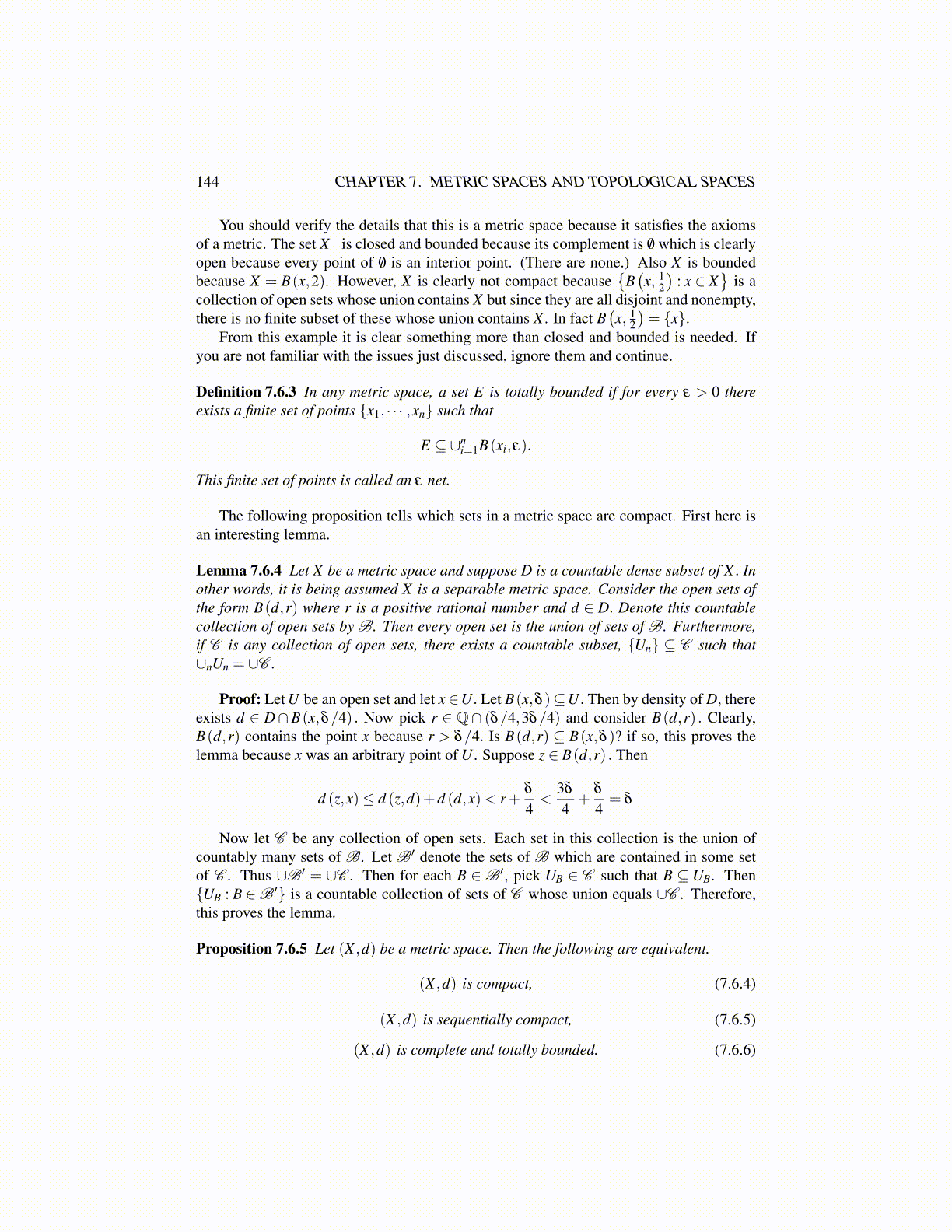
144 CHAPTER 7. METRIC SPACES AND TOPOLOGICAL SPACES
You should verify the details that this is a metric space because it satisfies the axiomsof a metric. The set X is closed and bounded because its complement is /0 which is clearlyopen because every point of /0 is an interior point. (There are none.) Also X is boundedbecause X = B(x,2). However, X is clearly not compact because
{B(x, 1
2
): x ∈ X
}is a
collection of open sets whose union contains X but since they are all disjoint and nonempty,there is no finite subset of these whose union contains X . In fact B
(x, 1
2
)= {x}.
From this example it is clear something more than closed and bounded is needed. Ifyou are not familiar with the issues just discussed, ignore them and continue.
Definition 7.6.3 In any metric space, a set E is totally bounded if for every ε > 0 thereexists a finite set of points {x1, · · · ,xn} such that
E ⊆ ∪ni=1B(xi,ε).
This finite set of points is called an ε net.
The following proposition tells which sets in a metric space are compact. First here isan interesting lemma.
Lemma 7.6.4 Let X be a metric space and suppose D is a countable dense subset of X . Inother words, it is being assumed X is a separable metric space. Consider the open sets ofthe form B(d,r) where r is a positive rational number and d ∈ D. Denote this countablecollection of open sets by B. Then every open set is the union of sets of B. Furthermore,if C is any collection of open sets, there exists a countable subset, {Un} ⊆ C such that∪nUn = ∪C .
Proof: Let U be an open set and let x∈U. Let B(x,δ )⊆U. Then by density of D, thereexists d ∈ D∩B(x,δ/4) . Now pick r ∈ Q∩ (δ/4,3δ/4) and consider B(d,r) . Clearly,B(d,r) contains the point x because r > δ/4. Is B(d,r) ⊆ B(x,δ )? if so, this proves thelemma because x was an arbitrary point of U . Suppose z ∈ B(d,r) . Then
d (z,x)≤ d (z,d)+d (d,x)< r+δ
4<
3δ
4+
δ
4= δ
Now let C be any collection of open sets. Each set in this collection is the union ofcountably many sets of B. Let B′ denote the sets of B which are contained in some setof C . Thus ∪B′ = ∪C . Then for each B ∈ B′, pick UB ∈ C such that B ⊆ UB. Then{UB : B ∈B′} is a countable collection of sets of C whose union equals ∪C . Therefore,this proves the lemma.
Proposition 7.6.5 Let (X ,d) be a metric space. Then the following are equivalent.
(X ,d) is compact, (7.6.4)
(X ,d) is sequentially compact, (7.6.5)
(X ,d) is complete and totally bounded. (7.6.6)